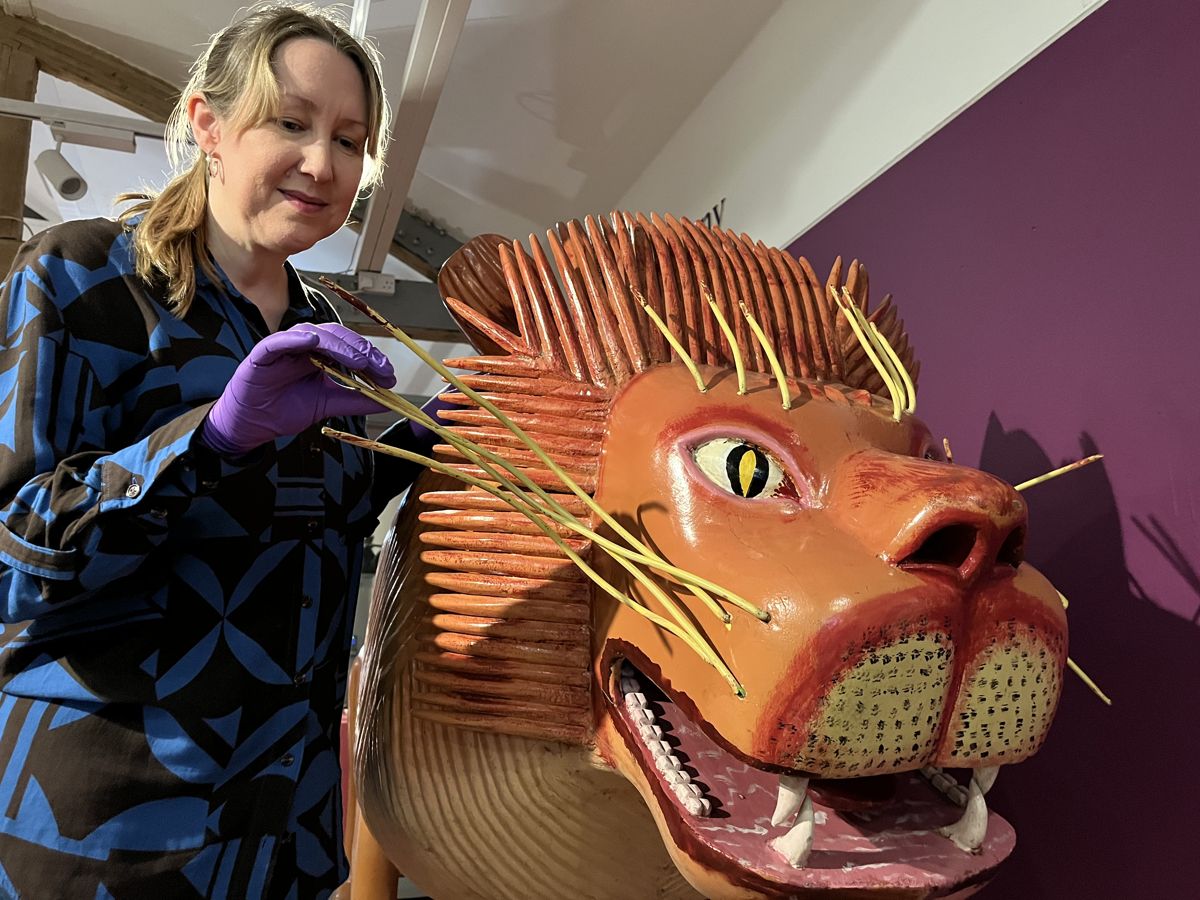The ‘Living with Death’ exhibition at Leeds City Museum delves into global traditions and history surrounding death and bereavement, featuring artifacts like a Ghanaian lion-shaped coffin and a Yorkshire memorial quilt to spark reflection on the universal experience of death. This free display, running until January 5, 2025, aims to engage visitors in open dialogue about the often taboo subject of death while honoring diverse cultural perspectives.
What is the ‘Living with Death’ exhibition at Leeds City Museum about?
The ‘Living with Death’ exhibition at Leeds City Museum is a free display running until January 5, 2025, exploring death and bereavement through global traditions and history. It features a Ghanaian lion-shaped coffin, a Roman mummy portrait, a Yorkshire memorial quilt, and a historic lead coffin, encouraging dialogue and reflection on the universal human experience of death.
Unveiling the Living with Death Exhibition at Leeds City Museum
Leeds City Museum has inaugurated the ‘Living with Death’ exhibition, a bold exploration into the themes of death and bereavement through the lens of global traditions and history. This free exhibition, which opened its doors to the public on May 3, will run until January 5, 2025. The display features a lion-shaped coffin, a creation of Ghanaian artist Paa Joe, who is renowned for his custom abebuu adekai, or ‘proverb boxes’. These striking artifacts reflect key aspects of the lives of those they commemorate.
The exhibition showcases an impressive collection of items, including a Roman period mummy portrait on loan from Manchester Museum and a Leeds Ofrenda by Ellie Harrison, which pays homage to Mexican Day of the Dead customs. Furthermore, visitors will encounter a Yorkshire memorial quilt and a historic lead coffin, both encapsulating poignant narratives of loss and remembrance.
Kat Baxter, curator of archaeology at Leeds Museums and Galleries, remarked, “Death and dying are uniquely unifying topics, which every person around the world experiences in their own way at some stage.” The exhibition is not merely a display of artifacts; it is intended as a catalyst for dialogue and reflection on this universal human experience.
Artifacts and Memories: A Journey through Grieving and Celebration
Artifacts spanning thousands of years are central to the exhibition’s narrative, presenting visitors with the diverse ways cultures confront and commemorate death. The Ghanaian lion coffin, loaned by ARTDOCS and crafted by Paa Joe, stands as a testament to the significant role that these items play in the cultural heritage of Ghana. Paa Joe’s coffins have been displayed globally, honoring numerous Ghanaian cultural figures.
In addition to international objects, the exhibition draws on local contributions, such as the ‘Speak Their Name’ Memorial Quilt. This vibrant and heartfelt piece serves as a lasting tribute to individuals who have died by suicide. The inclusion of personal items loaned by residents of Leeds adds an intimate layer to the display, bridging the gap between the global and the personal.
Another highlight is the 1,600-year-old lead coffin, which was unearthed by archaeologists in Leeds and is being shown to the public for the first time. It holds the remains of a woman believed to have been of high status, illustrating the historic and archaeological significance of the burial traditions on display.
Engaging the Community and Supporting Conversations
Living with Death goes beyond being an exhibition; it is a community-engaged initiative, developed with input from local communities and supported by Dying Matters Leeds. This collaboration emphasizes the museum’s role in fostering public awareness and understanding of death and bereavement.
Councillor Jonathan Pryor, Leeds City Council’s deputy leader and executive member for economy, culture, and education, praised the exhibition’s scope. Pryor said, “Museums have an amazing capacity to approach difficult subjects in an accessible and thought-provoking way.” Through this exhibition, Leeds City Museum invites visitors to engage with a topic that is often shrouded in silence.
The collection of artifacts is complemented by a varied program of events designed to support the exhibition. These events provide a platform for further engagement and learning, making the museum a hub for discourse on these universal themes. In partnership with Co-op Funeralcare, the museum offers a space where death can be approached with curiosity and respect.
For more details on the exhibition and the associated events, interested individuals can visit Living with Death – Leeds Museums & Galleries.
ENDS
- The ‘Living with Death’ exhibition at Leeds City Museum explores death and bereavement through global traditions and history, featuring artifacts like a Ghanaian lion-shaped coffin and a Yorkshire memorial quilt.
- This free exhibition, running until January 5, 2025, aims to engage visitors in open dialogue about the often taboo subject of death while honoring diverse cultural perspectives.
- The exhibition showcases items such as a Roman mummy portrait, a Leeds Ofrenda by Ellie Harrison, a Yorkshire memorial quilt, and a historic lead coffin, all reflecting poignant narratives of loss and remembrance.
- The exhibition features artifacts spanning thousands of years, including the Ghanaian lion coffin by Paa Joe and the 1,600-year-old lead coffin unearthed in Leeds, highlighting cultural heritage and burial traditions.
- Living with Death is a community-engaged initiative developed with input from local communities and supported by Dying Matters Leeds, aiming to foster public awareness and understanding of death and bereavement.
